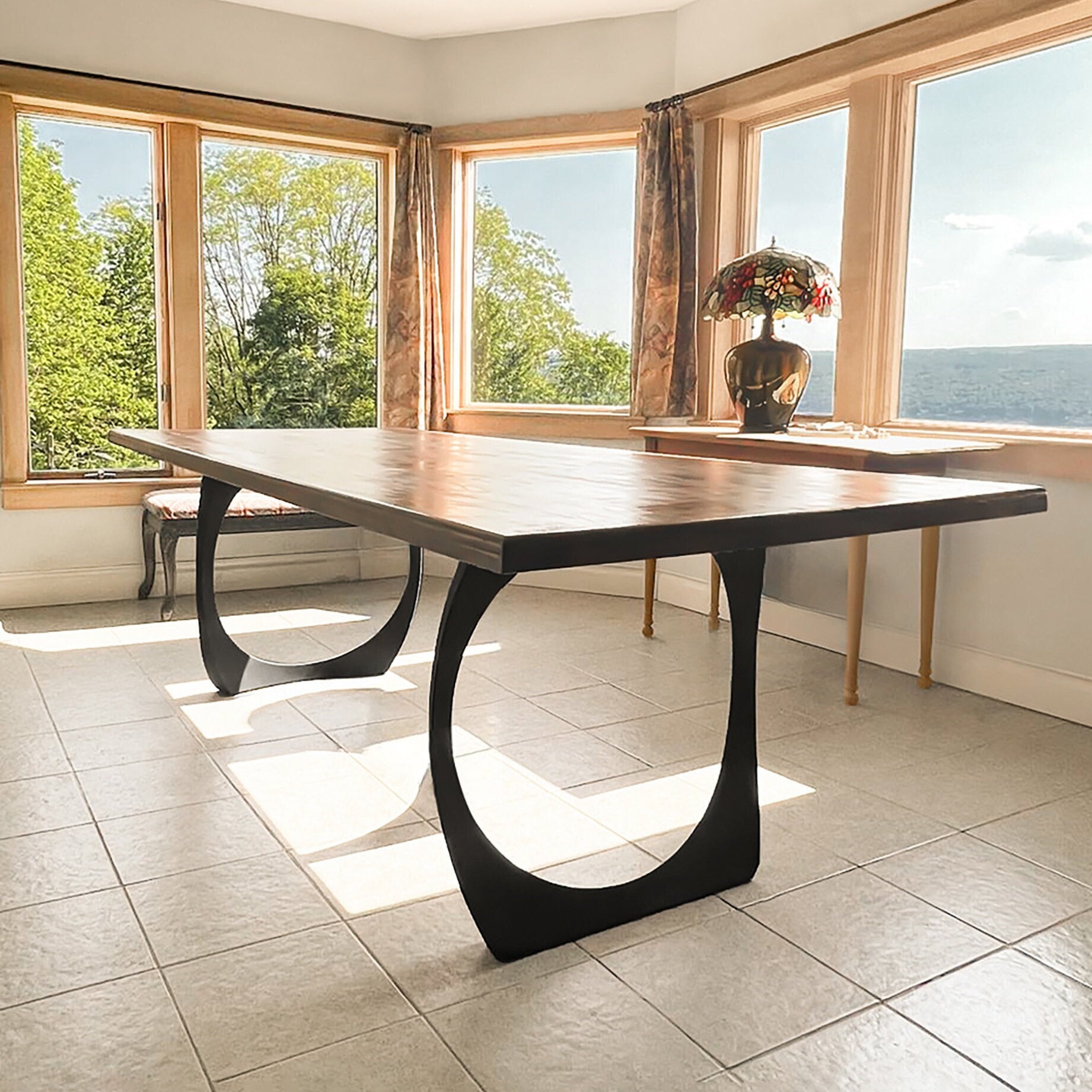Distinct Dining Room Table Legs to Change Your Dining Location
Distinct Dining Room Table Legs to Change Your Dining Location
Blog Article
A Comprehensive Look at Eating Table Leg Styles: Finding the Ideal Suit
Choosing the right eating table leg style is vital for both visual charm and functional functionality. Conventional 4 legs use timeless style and security, while the stand base gives raised legroom and a modern-day appearance. For those with larger tables, trestle legs make sure durable assistance, whereas hairpin legs present a mid-century modern vibe with their minimal design. The x-shaped legs blend modern design with improved security. Each of these options brings distinct advantages, making the choice more than just a matter of choice. Discover additionally to discover which design flawlessly enhances your eating area and lifestyle.
Typical Four Legs
Amongst the various kinds of eating table leg styles, the standard four-leg design stays a classic option for lots of houses. Four legs provide balanced assistance, making certain the table stays steady and qualified of bearing substantial weight (dining room table legs).
From a visual perspective, the traditional four-leg layout can be easily adjusted to different indoor styles. Whether crafted from timber, metal, or a mix of products, these legs can be delicately sculpted, sleek and minimalistic, or anything in between. Their convenience enables them to enhance both rustic and modern settings seamlessly.
Additionally, the uncomplicated framework of the four-leg design helps with simplicity of motion and placement within a space. Unlike even more complex bases, this design minimizes obstructions, offering enough legroom for restaurants. In summary, the standard four-leg eating table leg design weds sustaining style with functional capability, making it an astute option for those seeking both form and feature in their eating furnishings.
Stand Base
Frequently celebrated for its stylish and space-efficient style, the stand base is a recognized option to the conventional four-leg arrangement in table leg designs. This unique base commonly includes a solitary central column sustaining the table top, which can differ in type, from ornately sculpted timber to streamlined, contemporary metal. Among the main benefits of the pedestal base is its capacity to take full advantage of legroom and seating adaptability. Without edge legs, restaurants are paid for better freedom of movement, making it a suitable choice for round and oval tables that advertise even more intimate and comprehensive gatherings.
Furthermore, the stand base's main support can manage considerable weight, enabling for the use of larger table tops, such as marble or thick hardwood. This stamina combined with its visual convenience makes the pedestal base a prominent choice in both conventional and modern indoor setups. It can perfectly incorporate with various layout styles, from timeless beauty to minimal modernity. Furthermore, the central column itself supplies a canvas for complex designs and artistic expressions, including an element of visual passion underneath the table. discover this info here In recap, the stand base integrates functionality snappy, making it a refined and sensible option for varied dining settings.
Trestle Legs
Trestle legs offer a durable and classic structure for eating tables, identified by their straight cross-bracing and tough support beams. Stemming from middle ages times, this style has actually developed yet retained its crucial framework, making it a seasonal fave in both standard and modern setups. The main trestle beam, usually sustained by 2 or even more upright messages, supplies phenomenal stability, enabling for bigger table lengths without the requirement for added legs.
A considerable benefit of trestle leg tables is the ample legroom they offer. Unlike tables with four edge legs, the lack of obstructions at the table's sides provides unblocked area for chairs and diners, boosting comfort and availability. This makes trestle tables excellent pop over to this site for fitting bigger celebrations, whether in a dining space or a banquet hall.
The visual flexibility of trestle legs is noteworthy. Available in a variety of materials such as timber, metal, and composite, they can be finished to match a broad range of interior styles. From rustic farmhouse to sleek contemporary layouts, trestle legs can be tailored to suit specific tastes. Their enduring appeal and practical benefits make trestle legs a compelling choice for those looking for both design and practicality in their dining table.
Barrette Legs

The charm of hairpin legs depends on their simplicity and versatility - dining room table legs. Readily available in an array of products, including steel and brass, they can be finished in countless colors to enhance different interior designs. Whether combined with a rustic wood tabletop or a contemporary glass surface, barrette legs effortlessly mix capability with a check out here touch of vintage appeal
Toughness is another noteworthy feature of barrette legs. In spite of their delicate appearance, these legs are crafted to birth significant weight, making sure the table stays secure and safe and secure. Furthermore, they are reasonably very easy to set up, making them a preferred choice for DIY lovers and professional furnishings manufacturers alike.
X-Shaped Legs
Constructed from products such as steel, timber, or a mix of both, X-shaped legs can be customized to match different style choices. Steel legs often lend a sleek and commercial feeling, ideal for loft-style homes and contemporary eating rooms.
Moreover, the engineering behind X-shaped legs makes sure also weight distribution, minimizing the threat of tottering and boosting durability. This makes them particularly well-suited for larger table that call for additional support. Basically, X-shaped legs mix sensible design with modern looks, making them a classic choice for diverse dining atmospheres.
Verdict
An extensive understanding of table leg designs exposes the distinctive qualities and advantages of each design. Conventional four legs provide stability and classic charm, while pedestal bases offer legroom and a structured appearance. Trestle legs guarantee robust assistance for larger tables, and hairpin legs introduce a mid-century modern-day aesthetic. X-shaped legs integrate contemporary layout with boosted security. Selecting the ideal leg design makes sure both useful and visual contentment in any kind of dining area.
Report this page